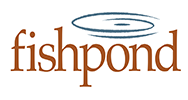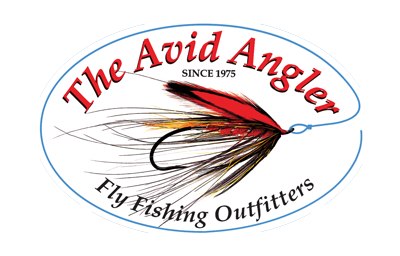Skykomish River, WA

Weather and Flows Links
Fly Fishing the Skykomish River
Many anglers cut their teeth fly fishing the Pacific Northwest on the Skykomish. A popular river for hatchery steelhead, it’s only about a 45 min. drive outside of Seattle, allowing lots of time to get outside and practice. The north and south forks flow out of the central Cascade Mountains and join to form the main river at Index. The main stem then follows along Highway 2 from Reiter Ponds steelhead hatchery and down to Gold Bar, Startup and Sultan before joining the Snoqualmie at Monroe. There is excellent wade access to ascending sea-run fish along this entire stretch. Major tributaries include the Wallace and Sultan. Getting to know the river allows you to chase steelhead, coho salmon, pink salmon in odd years, chum salmon, sea-run cutthroat, and resident trout in its upper reaches. Our home waters, we love fishing the Skykomish!
When is the Skykomish River Open to Fishing?
- Fishing regulations are subject to emergency closures and they change from year to year, so before you go, know what you are fishing for and always check the regs: http://wdfw.wa.gov/fishing/regulations/. Feel free to give us a ring with questions. It’s better to be safe than sorry!
- Targeting steelhead from the confluence with the Snoqualmie near Monroe to the Highway 2 crossing known as Big Eddy Access/High Bridge above Gold Bar, the Skykomish is generally open from June 1st until January 31st, and from Big Eddy to the confluence of the North and South Forks from June 1st until February 15th.
- Targeting salmon from the confluence with the Snoqualmie near Monroe to the Highway 2 crossing known as Big Eddy Access or High Bridge above Gold Bar, the Skykomish is generally open from September 1st until December 31st.
- The forks get a little complex, but generally if you want to target trout you can fish the South Fork Skykomish from the first Saturday in June until November 30th, and the North Fork Skykomish below Deer Falls from the first Saturday in June until January 31st.
Skykomish River Sections
The Skykomish, or the Sky as it is locally known, has a few distinct sections that keep anglers busy throughout the year. From Sultan downstream to the mouth, the valley stretches out, farmlands predominate and the river widens and slows down a bit compared to upriver. The riffles and runs are generally shallower, wider and longer and are perfect for swinging a fly for sea-run fish, especially in higher water.
Upstream from Sultan and Gold Bar the valley tightens up and the river is faster, deeper and more boulder strewn. This section produces fish throughout the year, but it really comes into its own for the fly angler when the water is lower. Just above the Highway 2 crossing at Big Eddy or High Bridge boat access, you’ll find Reiter Rearing Ponds, the site of acclimation for hatchery river steelhead, and a popular destination for many anglers.
The forks of the Skykomish offer intrepid anglers shots at resident trout and the rare, high-swimming steelhead. Rugged and difficult to access, these stretches are among the most beautiful in Washington state.
Skykomish River Species and Seasons
The Skykomish is one of the great fly-fishing rivers and it is best known for its steelhead fishing. The river opens June 1st to a mixture of late wild winter steelhead and early hatchery summer runs. Summer run steelhead fishing continues throughout the summer and into late fall until heavy rains bring the river back up to wintertime flows. As summer moves into fall, silver salmon and pink salmon (in odd years) crowd the river. If the summer run fishing has been slow, these fish provide a great angling experience before the onset of winter.
With late fall come the first winter fronts which will invariably raise the river to winter heights and generally this heralds the first fishing of the winter season. Chum salmon arrive sometime in November with numbers building to a peak around Thanksgiving. The first hatchery winter steelhead are always caught at this time and these fish peak in December and early January. The first of the year is the time when fly anglers seek the ultimate prize on a fly rod, the native winter steelhead. These fish can return at anytime during the winter, but their numbers increase right up to the time that the rivers closes on January 31st. The Sky is currently closed in February, March, April and May to protect the fragile run of native winter steelhead that spawn during this time.
When are the Best Times to Fly Fish the Skykomish?
- December and January for Hatchery Steelhead - Good numbers of hatchery winter steelhead with a few wild fish in the mix.
- June for Hatchery Steelhead - Good numbers of hatchery summer steelhead
- September and October - Sea-run cutthroat ascend the river in pods of opportunistic feeders
- September during odd-numbered years - Pink salmon ascend the river in massive numbers
Tips on Fishing the Skykomish
- When hatchery steelhead enter they system, they tend to rush up to their point of acclimation without stopping. For many fish on the Skykomish, this acclimation point is the Reiter Rearing Ponds above Gold Bar. If you are targeting hatchery fish, the holding water near Reiter is a great place to start. Not all fish hold right at the hatchery, and finding open water to fish can be tough, so don’t hesitate to hike up and down.
- In contrast to their hatchery counterparts, wild Skykomish fish take their time heading upstream, stopping in holding water along the entire length of the river. Getting to know a few quality runs over the course of the season will increase your odds of hooking into these prize gamefish.
- Learn to spey cast, and learn to do it well. The majority of the river is best covered with the superior efficiency of a long rod, especially the broad, sweeping runs between Gold Bar and Monroe.
Guiding and Expert Instruction
As our local river, we probably log more days on the Skykomish over the course of the season than any other. A guide can take years off the learning curve. The best way to experience the Skykomish is during a full-day float. We also offer steelhead schools and spey-casting instruction.Recommended Equipment
Trout in the Upper Forks
|
Sea-Run Cutthroat in Lower River
|
Steelhead rods for the Lower River
|
Steelhead lines for the Lower River
|
Recommended Flies
Resident Trout
|
Sea-Run Cutthroat
|
Steelhead & Salmon
|
Skykomish River - Forty five minutes to an hour from Seattle, the Skykomish River flows out of the central Cascade Mountains through the south and north forks which join to form the mainstem river at Index. It then flows through Gold Bar, Startup and Sultan before joining the Snoqualmie at Monroe. If any river is considered Seattle's home water, the Skykomish would probably be it. It hosts runs of winter and summer steelhead as well as four species of Pacific Salmon. Silvers, chum and pink salmon predominate with Chinook salmon hanging on with a remnant run of fish. Sea-run cutthroat also run the Sky in the fall.
The Skykomish, or the Sky as it is locally known, has two distinct sections that keep anglers busy throughout the year. From Sultan downstream to the mouth, the valley stretches out, farmlands predominate and the river widens and slows down a bit compared to upriver. The riffles and runs are generally shallower, wider and longer and are perfect for swinging a fly for anadromous fish especially in higher water. Upstream from Sultan and Gold Bar the valley tightens up and the river is faster, deeper and more boulder strewn. This section produces fish throughout the year, but it really comes into its own for the fly angler when the water is lower.
The Skykomish is a great fly fishing river and it is best known for its steelhead fishing. The river opens June 1 st to a mixture of late wild winter steelhead and early hatchery summer runs. Summer run steelhead fishing continues throughout the summer and into late fall until heavy rains bring the river back up to winter time flows. As summer moves into fall, silver salmon and pink salmon (in odd years) crowd the river. If the summer run fishing has been slow, these fish provide a great angling experience before the onset of winter. With late fall come the first winter fronts which will invariably raise the river to winter heights and generally this heralds the first fishing of the winter season. Chum salmon arrive first sometime in November with numbers building to a peak around Thanksgiving. The first hatchery winter steelhead are always caught at this time and these fish peak in December and early January. The first of the year is the time when fly anglers seek the ultimate prize on a fly rod, the native winter steelhead. These fish can return at anytime during the winter, but their numbers increase right up to the time that the rivers closes at the end of February. The river is closed to fishing in March, April and May to protect the fragile run of native winter steelhead that spawn during this time.










